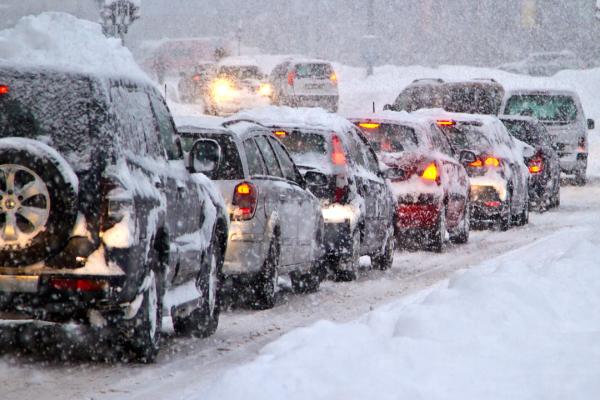Learn how to keep safe and healthy when it snows
Snow can be a lot of fun. Follow these tips to have an enjoyable and safe experience.
Driving in winter
Prepare yourself and your vehicle for driving in snow.
- Switch to winter tires for better performance on icy roads. Explore ICBC's winter tires guide.
- Clean all the snow off your vehicle, including the windshield and roof.
- Drive slow and leave extra distance between you and the vehicle ahead of you.
- Stay informed of traffic conditions and weather forecasts during your drive.
- Keep a shovel and a bag of sand or kitty litter for traction in case you get stuck.
- Consider taking transit instead of driving.
Here are some more tips to prepare yourself and your vehicle during winter.
Walking in winter
Follow these tips to minimize slips and falls during snow and icy conditions.
- Wear proper footwear with good tread and clear any snow caked to the soles. Avoid wearing high heels or other footwear with poor grip.
- Don't rush while walking on icy surfaces. Shuffle or take small steps instead of long strides to keep your balance. Plan extra travel time when commuting on foot.
- Avoid taking shortcuts and stick to cleared sidewalks even if it takes a little longer.
- When walking, watch out for hazards and avoid slippery surfaces such as wet leaves, icy areas and snowbanks. Test potentially slick spots with your foot before venturing.
- Use handrails when walking upstairs, use your hands for balance.
- Pay attention to where you're going. Don't text and walk at the same time.
- Only carry what you need. Consider wearing a backpack to not obstruct your view or limit your ability to brace yourself in a fall.
Home and emergency preparedness
Know what actions to take in the event of a snowfall.
Before snowfall
- Store an emergency kit that enables you to be self-sufficient for 3 days, both at home and in your car. Ensure you have adequate food, water and medication.
- Locate the nearest fire hydrant and catch basin around your home.
- Have a shovel and salt supply on hand for sidewalks and roadways.
- Monitor and stay up to date on local weather forecasts.
During snowfall
- Consider alternative modes of transportation if you aren't confident of driving in the snow.
- Where possible, avoid parking on the street to give plows sufficient room to clear local roadways.
- Ensure nearby fire hydrants are clear of snow for emergency responders to spot.
- Be prepared to offer assistance to relatives and neighbours in need.
- Report downed trees, floods or other hazardous conditions to our dispatch crew at 604-294-7200.
Shovelling
Reduce your chances of an injury during winter with these snow shovelling tips.
- Use an ergonomic shovel with a curved or adjustable handle, which makes snow removal easier.
- Do your back a favour by warming up/stretching for 5-10 minutes before shovelling or go for a brisk walk, march in place or do other full-body activities before shovelling.
- Push the snow to one side rather than lifting it with the shovel. If lifting is unavoidable, make sure to bend your knees.
- Pace yourself by removing small amounts of snow frequently instead of removing a large pile all at once.
- Take a break for 10-15 minutes during shovelling and stretch out your arms, shoulders and back to keep them warm and flexible.
- As an owner or occupier of single-family, two-family, multi-family, industrial, commercial or institutional properties, you must remove snow or ice from sidewalks surrounding your property no later than 10 am every day. This includes holidays, per Section 31 of Burnaby's Street and Traffic Bylaw.
